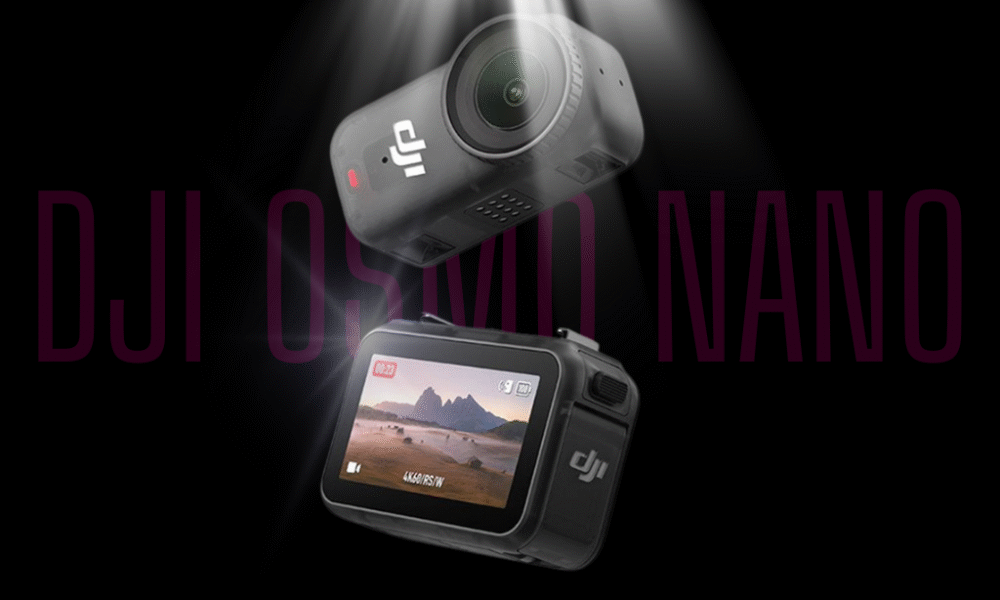Photography
The Future Is Tiny: An In-Depth Look at the New DJI Osmo Nano

New DJI Osmo Nano
DJI, a name synonymous with drones and gimbals, is once again shaking up the world of portable cameras with its latest innovation: the DJI Osmo Nano. This ultra-compact, modular camera isn’t just a gadget; it’s a creator’s tool designed to go where no other camera can, capturing life from a fresh, hands-free perspective. We’ve delved into the details of DJI’s smallest-ever camera to give you the definitive guide on its features, performance, and where it stands against the competition.
Unveiling a New Form Factor
The DJI Osmo Nano is built around a two-part modular system, which is arguably its most groundbreaking feature. The core is the tiny, 52-gram camera module, which can be used completely on its own. This ultra-lightweight and waterproof unit is designed for creative mounting in tight spaces—on a helmet, a hat, a pet, or even a drone. It connects to the second component, the Multifunctional Vision Dock, via a secure magnetic latch.
The Vision Dock is a game-changer. It features a 1.96-inch OLED touchscreen that serves as a live view monitor, a control hub for settings, and a fast-charging station. When the two are connected, you get a traditional, handheld action camera experience. But the dock can be flipped for vlogging or detached to act as a remote control, allowing for truly unique, hands-free shots while still maintaining full control.
Key Features and Specifications
Beyond its innovative design, the Osmo Nano packs a surprising amount of power into its minuscule body.
- 1/1.3-inch Sensor: Despite its size, the camera houses a large sensor capable of capturing 35-megapixel stills. This is a significant leap for a camera of this size, promising superior low-light performance and dynamic range.
- Professional Video: The Nano records in stunning 4K at up to 60fps and offers a cinematic 4K/120fps slow-motion mode. It also supports 10-bit D-Log M color profiles, giving creators maximum flexibility for color grading in post-production.
- Impressive Durability: The camera module is waterproof up to 10 meters (33 feet) without any additional housing, making it ready for underwater adventures. The Vision Dock is IPX4-rated, providing splash resistance.
- Stabilization: DJI’s RockSteady 3.0 stabilization technology ensures your footage remains smooth and stable, while HorizonBalancing keeps your shots level, even during fast-paced action.
- Audio: The camera module includes dual built-in microphones, and for even better audio, it connects directly to DJI wireless mics without the need for a separate receiver.
- Storage and Battery: The Osmo Nano comes with either 64GB or 128GB of internal storage, expandable via a microSD card slot on the Vision Dock. The dock itself provides an extended battery life of up to 200 minutes at 1080p, and it can fast-charge the camera unit to 80% in just 20 minutes.
Pros and Cons
| Pros | Cons |
| Ultra-compact & lightweight | No swappable batteries |
| Superior image quality for its size | Cannot review footage remotely without dock |
| Versatile modular design | Potential for overheating during extended 4K/60fps recording |
| Excellent video stabilization | No USB-C port on the camera module itself |
| Fast-charging Vision Dock | Small screen on the dock |
| Seamless DJI wireless mic integration | Less convenient vlogging mode than competitors |
Competitor Comparison Chart
| Feature | DJI Osmo Nano | Insta360 Go Ultra | GoPro Lit Hero |
| Sensor | 1/1.3-inch | 1/1.3-inch | 1/1.9-inch |
| Max Video Resolution | 4K/60fps | 4K/60fps | 5.3K/30fps, 4K/60fps |
| Max Still Resolution | 35MP | 50MP | Not available |
| Field of View (FOV) | 143° | 156° | 162° |
| Stabilization | RockSteady 3.0, HorizonBalancing | FlowState Stabilization | HyperSmooth 6.0 |
| Waterproofing | Camera: 10m / Dock: IPX4 | Camera: 10m / Dock: IPX4 | Not available |
| Internal Storage | 64GB / 128GB | No built-in storage | Not available |
| Display | 1.96″ OLED on dock | 2.2″ on dock | Fixed front + rear display |
| Design | Modular, magnetic | Modular, magnetic | Traditional action cam |
Q&A
Q: Is the DJI Osmo Nano the successor to the Osmo Action 4? A: No, the Osmo Nano is an entirely new product line that focuses on a wearable, ultra-compact form factor. It coexists with the more traditional action camera design of the Osmo Action series, offering creators a different tool for their needs.
Q: Can I use the camera module without the dock? A: Yes, the camera module is a fully functional unit on its own. You can start/stop recording with a button and use it to capture hands-free POV footage. However, to review footage or change settings, you will need to reconnect it to the Vision Dock or your phone via the DJI Mimo app.
Q: How does the Osmo Nano compare to the Insta360 Go Ultra? A: Both cameras share a similar modular, ultra-compact concept. The Osmo Nano has a slightly smaller FOV but offers a compelling 10-bit D-Log M color profile and a larger built-in storage capacity. The Go Ultra has a slightly better app and a “Find My” feature for lost cameras. The choice comes down to whether you prioritize DJI’s color science and ecosystem or Insta360’s app and unique features.
Q: Can I attach an external battery to the Osmo Nano for longer shoots? A: While you can’t swap out the battery in the camera module itself, you can charge the entire system on the go via the USB-C port on the Vision Dock, allowing you to use a power bank to extend shooting time.
📸 Ready to capture perfection? Discover the cameras, lenses, and gear that make every shot unforgettable. Dive into our Photography Reviews now